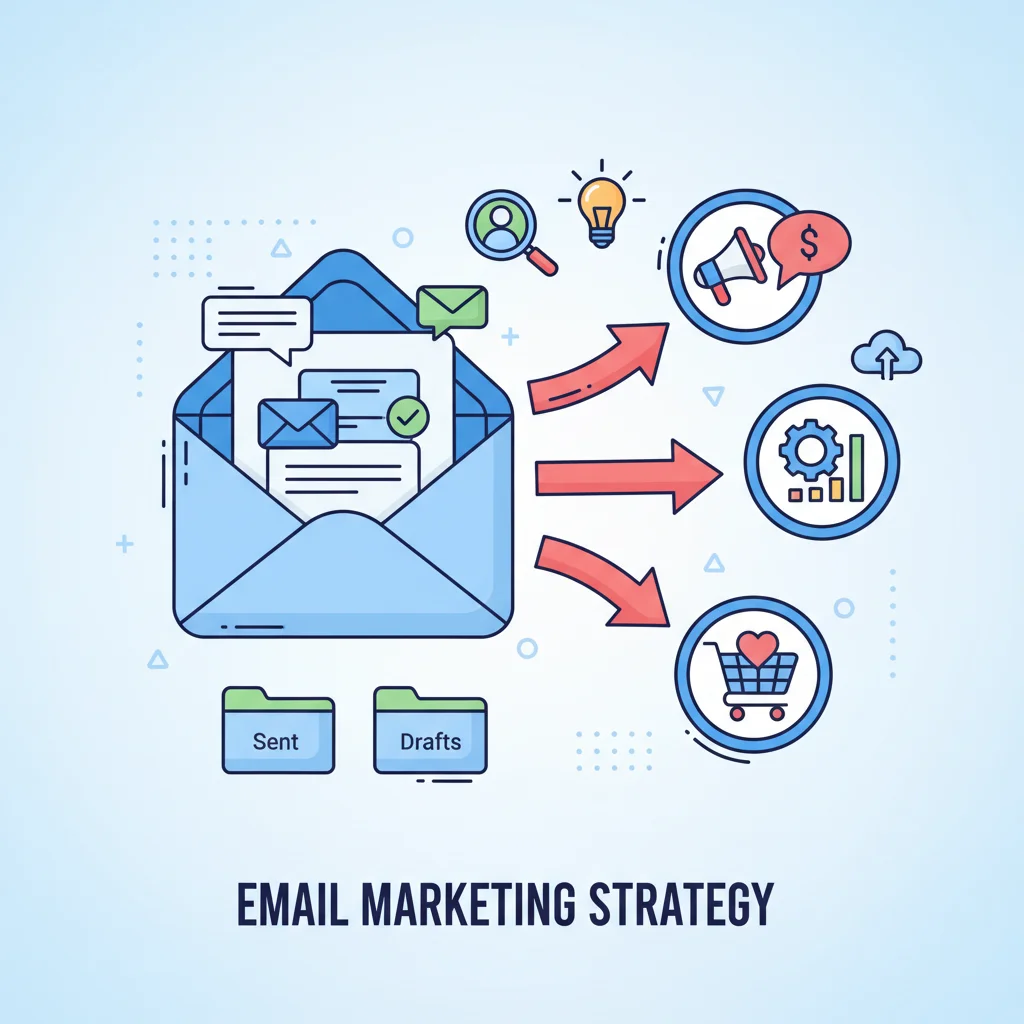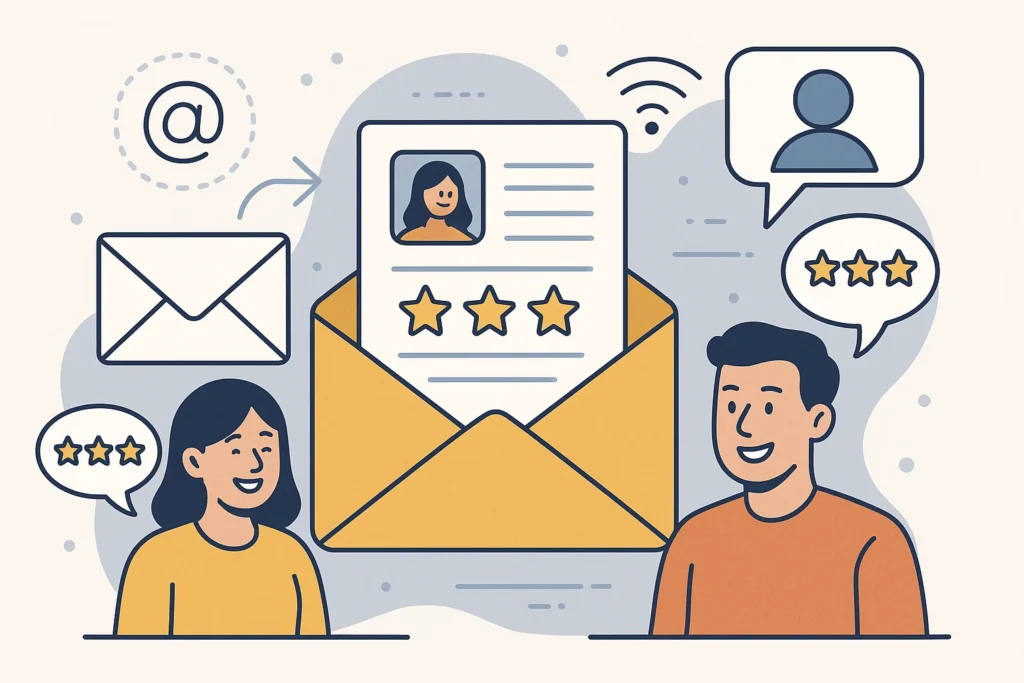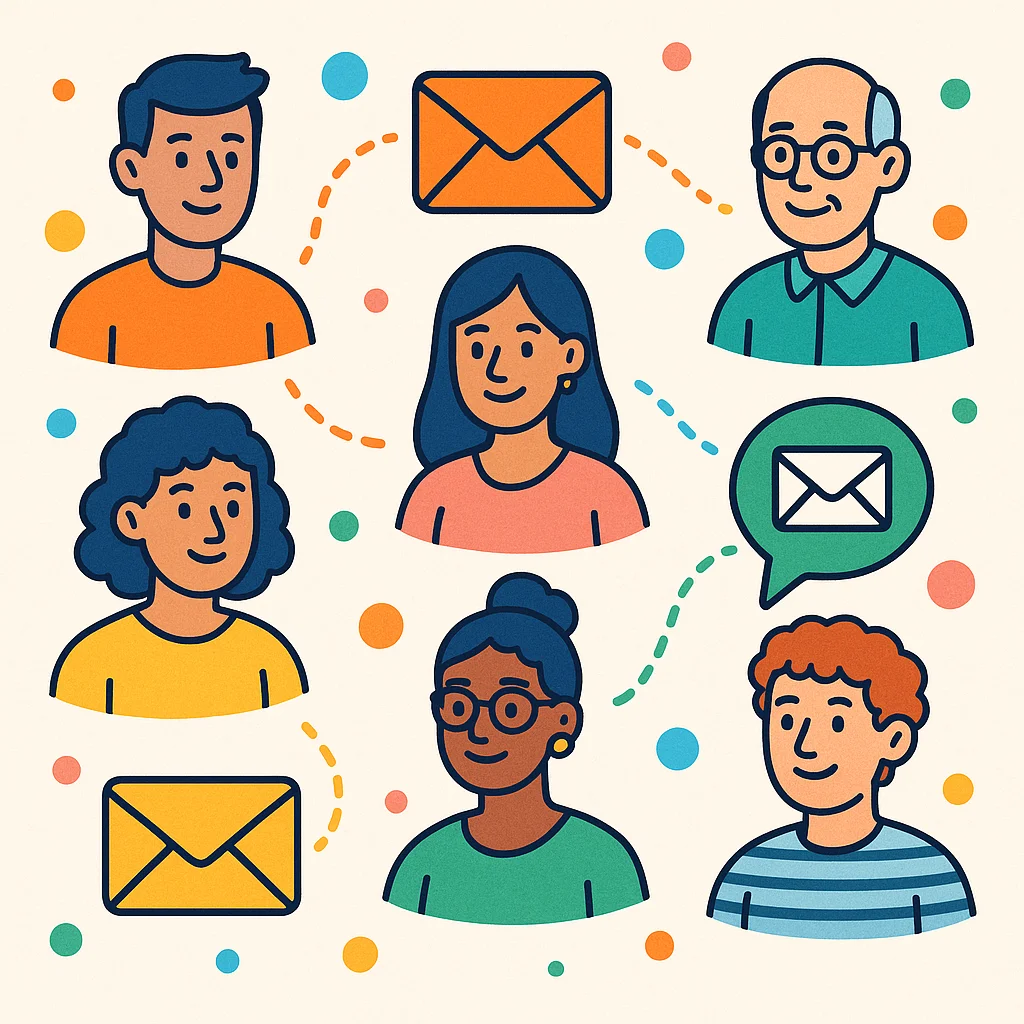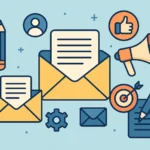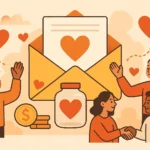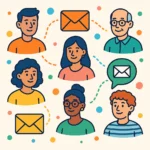Now Reading: 8 Steps to Build Effective Education Email Campaigns
-
01
8 Steps to Build Effective Education Email Campaigns
8 Steps to Build Effective Education Email Campaigns
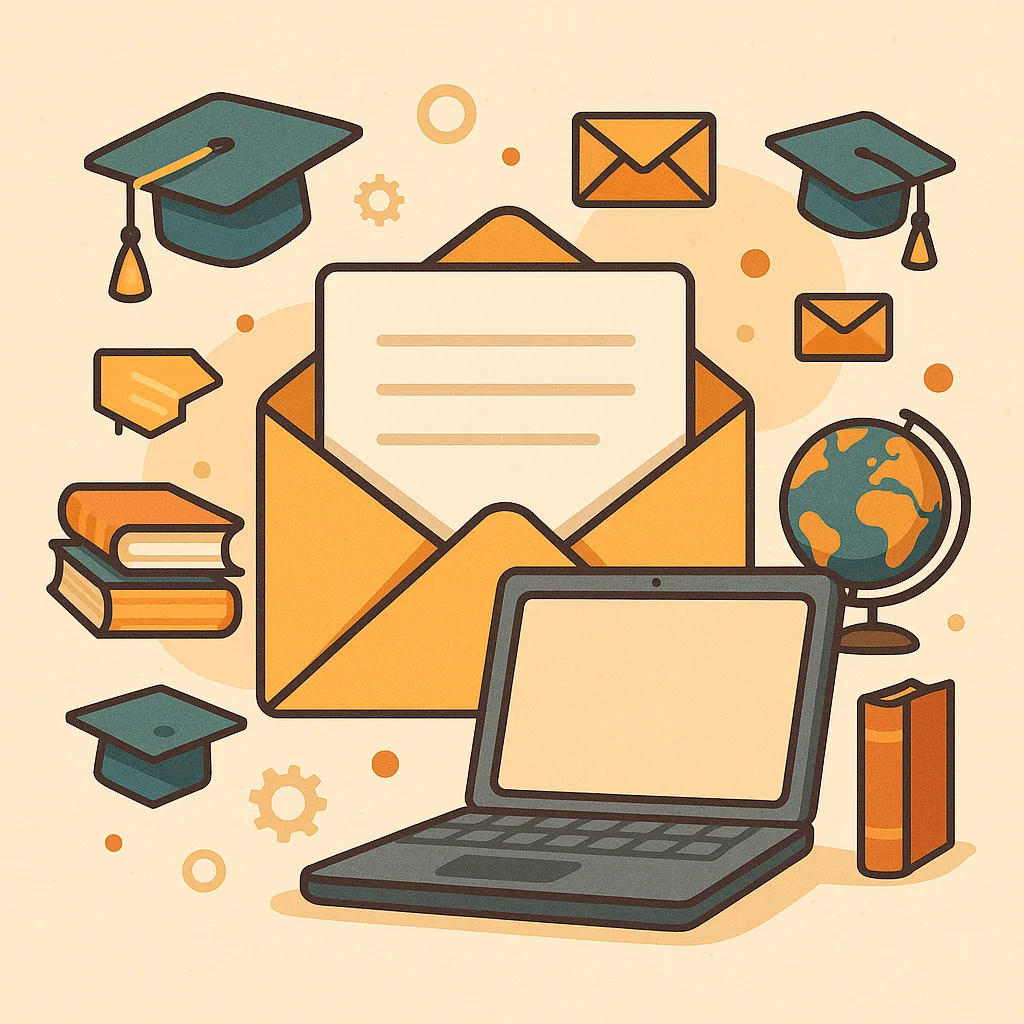
Here’s the brutal truth about education marketing: most schools are drowning their prospects in boring, generic emails that get deleted faster than you can say “unsubscribe.” But what if I told you that creating an effective education email campaign isn’t rocket science? It’s actually simpler than you think, and I’m about to show you exactly how to do it.
Key Takeaways
Creating an effective email marketing campaign for education requires strategic planning and understanding your unique audience segments. Here’s what you need to know:
- Segment your audience into distinct groups: prospective students, current students, parents, and alumni each have different needs and interests
- Personalize content based on academic interests, enrollment status, and demographic data to increase engagement rates
- Use compelling subject lines that are concise, clear, and create urgency when appropriate – avoid spam triggers
- Focus on valuable content like academic resources, success stories, event invitations, and application guidance rather than just promotional material
- Optimize timing and frequency by testing send times and maintaining consistent communication without overwhelming recipients
- Include clear calls-to-action that guide readers toward specific actions like applying, registering for events, or downloading resources
- Design mobile-friendly emails since most students check email on their phones – use responsive templates and readable fonts
- Build trust with testimonials and success stories from current students, alumni, and parents to showcase real outcomes
Understanding Your Education Email Audience
Before you write a single word, you need to get inside your audience’s head. Educational email marketing isn’t like selling widgets – you’re dealing with life-changing decisions, financial investments, and emotional journeys.
Prospective students are usually stressed about their future, comparing options, and looking for reassurance. They want to know: “Will this school help me achieve my dreams?” Parents are thinking about ROI, safety, and whether their investment will pay off. Current students need practical information, deadlines, and ways to stay connected. Alumni want to feel proud of their alma mater and see how they can stay involved.
Each group speaks a different language and has different pain points. A prospective engineering student doesn’t care about the new cafeteria menu, but they definitely want to hear about internship opportunities at tech companies.
Segmentation That Actually Works
Here’s where most schools mess up – they create one email list and blast everyone with the same content. That’s like using a megaphone when you need a conversation.
Smart segmentation goes beyond just “students” and “parents.” Think about:
- Academic interests (STEM vs. liberal arts vs. business)
- Geographic location (local, national, international)
- Enrollment stage (just inquired vs. applied vs. enrolled)
- Engagement level (highly engaged vs. needs nurturing)
- Demographics (age, first-generation college student, transfer student)
The data shows that segmented campaigns generate 760% more revenue than mass emails. In education terms, that means more applications, higher enrollment, and better student engagement.
Useful Articles:
Building Your Email List The Right Way
You can’t have an effective education email campaign without a solid email list. But here’s the thing – buying email lists is like building a house on quicksand. You need people who actually want to hear from you.
Lead Magnets That Work For Education
Instead of just asking for emails, give people a reason to share their contact information:
- College preparation guides for high school students
- Financial aid worksheets for parents
- Career outcome reports for specific programs
- Campus virtual tour access for remote prospects
- Study abroad program details for current students
The key is making your lead magnet so valuable that people would pay for it if they had to.
Collection Points That Convert
Don’t just rely on your website’s contact form. Get creative with where you collect emails:
- Campus tours – have a simple tablet signup
- College fairs – QR codes that link to exclusive content
- Social media – promote your lead magnets
- Student events – capture emails from attendees
- Webinars – require registration for valuable sessions
Crafting Content That Connects
This is where the magic happens. Your content needs to be so good that people actually look forward to your emails. I know, I know – that sounds impossible when you’re competing with TikTok and Instagram. But it’s totally doable.
Email Types That Get Results
Welcome series emails are your first impression. Make them count:
Subject: Welcome to [School Name] - Your Journey Starts Here!
Hi [First Name],
Welcome to the [School Name] family! I'm excited you've taken this first step toward your future.
Over the next few days, I'll be sending you some resources that our most successful students found helpful:
* Tomorrow: Your complete guide to our application process
* Day 3: Financial aid secrets most students don't know
* Day 5: A virtual tour of our campus (including the spots only current students know about)
In the meantime, feel free to reply to this email with any questions. I read every single one.
Excited for your journey,
[Name]
[Title]Program spotlight emails showcase specific offerings:
Subject: Why Our Computer Science Grads Get Hired Before Graduation
Hi [First Name],
Quick question: What if I told you that 94% of our Computer Science graduates receive job offers before they even walk across the graduation stage?
Here's what makes our program different:
✓ Real-world projects with actual companies
✓ Mentorship from industry professionals
✓ Internship guarantee (yes, really)
✓ Small class sizes (15 students max)
Sarah Chen, who graduated last spring, landed her dream job at Google. She says: "The hands-on experience I got at [School Name] made me stand out from hundreds of other candidates."
Want to learn more about our Computer Science program?
[View Program Details]
Questions? Just hit reply - I'm here to help.
Best,
[Name]The Power Of Student Stories
Nothing sells your school better than real student success stories. But don’t just list achievements – tell the whole story. Show the struggle, the growth, the transformation.
Instead of: “John graduated with honors.”
Try: “John came to us as a shy first-generation college student who wasn’t sure he belonged. Today, he’s leading a team of engineers at a Fortune 500 company. Here’s how we helped him find his confidence…”
People connect with stories, not statistics. Though statistics definitely help validate the stories.
Useful Articles:
Personalization Beyond First Names
Using someone’s first name is personalization 101. But effective education email campaigns go way deeper.
Behavioral Personalization
Track how people interact with your emails and website, then use that data:
- Someone who clicked on nursing program info gets more healthcare-related content
- A parent who downloaded financial aid guides receives scholarship announcements
- Students who engaged with campus life content get event invitations
Academic Interest Personalization
If someone showed interest in your business program, don’t send them emails about art classes. Tailor everything:
- Subject lines that mention their area of interest
- Content that speaks to their career goals
- Success stories from graduates in their field
- Events relevant to their academic path
Geographic Personalization
A student from California has different concerns than one from Maine. Local students might care about campus parking, while out-of-state students want to know about housing and campus culture.
Subject Lines That Get Opened
Your subject line is like the cover of a book – it determines whether someone opens your email or scrolls past it. In education, you’re competing with everything from social media notifications to assignment reminders.
What Works In Education Email
Curiosity-driven subjects:
- “The one thing successful students do differently”
- “Why our graduates get hired faster”
- “The campus secret admissions won’t tell you”
Urgency (when appropriate):
- “Application deadline in 48 hours”
- “Last chance for early admission”
- “Scholarship applications close Friday”
Personal benefit:
- “Your path to a nursing career starts here”
- “How to graduate debt-free”
- “Turn your passion into your profession”
Subject Line Mistakes To Avoid
Don’t use ALL CAPS (looks spammy), don’t oversell with too many exclamation points, and avoid words like “free,” “guarantee,” and “act now” that trigger spam filters.
Test different approaches. What works for one audience might flop with another. A/B testing isn’t just for big companies – even small schools can test two subject lines and see which performs better.
Useful Articles:
Timing And Frequency That Works
When you send emails matters just as much as what you send. Students and parents have different schedules and habits than typical consumers.
Best Times For Education Emails
Tuesday through Thursday typically see the highest open rates. Monday mornings are usually cluttered with weekend catch-up, and Friday afternoons compete with weekend plans.
Time of day matters too:
- 10 AM – 11 AM: Good for reaching parents
- 2 PM – 4 PM: Students often check email between classes
- 7 PM – 9 PM: Family time when parents and students might review together
But here’s the thing – your audience might be different. Test different times and track your results.
Finding The Right Frequency
Too many emails and people unsubscribe. Too few and they forget about you. For education, here’s what typically works:
- Prospective students: 1-2 emails per week during application season, 1 per week otherwise
- Current students: 2-3 emails per week (they need more information)
- Alumni: 1-2 emails per month (less frequent but more substantial)
Automation That Nurtures
Manual email campaigns are like trying to teach a class of 500 students individually. Automation lets you scale personal communication.
Essential Automated Sequences
Application nurture sequence for prospects:
Day 1: Welcome and next steps
Day 3: Program highlights relevant to their interests
Day 7: Financial aid information
Day 14: Student success story
Day 21: Campus life and culture
Day 30: Application deadline reminder
New student onboarding sequence:
Week 1: Welcome and orientation information
Week 2: Academic resources and support services
Week 3: Campus life and extracurricular opportunities
Week 4: Connect with academic advisor
Behavioral Triggers
Set up emails that trigger based on actions:
- Someone downloads a program brochure → Send related success stories
- A student misses an important deadline → Send helpful reminder with next steps
- Alumni engage with career services → Send job opportunities and networking events
Mobile-First Email Design
Most students live on their phones. If your emails don’t look good on mobile, you’re basically invisible.
Mobile Design Essentials
- Single column layouts work best on small screens
- Large, tappable buttons (at least 44px tall)
- Short subject lines (under 30 characters show fully on mobile)
- Scannable content with headers and bullet points
- Compressed images that load quickly
Template Example For Mobile
Subject: Your nursing program info is here!
[School Logo]
Hi Sarah,
Thanks for your interest in our Nursing Program!
🏥 99% job placement rate
👩⚕️ Clinical rotations at top hospitals
📚 Small class sizes (12 students max)
💰 Financial aid available
[VIEW PROGRAM DETAILS]
Questions? Text us at (555) 123-4567
[Social Media Icons]
[Unsubscribe Link]Call-To-Action Strategies
Every email needs a clear next step. But in education, the path from interest to enrollment is long and complex. Your CTAs need to guide people through each stage.
CTA Best Practices For Education
Make them action-oriented:
- “Schedule Your Campus Visit”
- “Download Your Program Guide”
- “Start Your Application”
- “Join Our Virtual Info Session”
Use contrasting colors that stand out from your email design. Limit to 1-2 CTAs per email to avoid decision paralysis.
Stage-Appropriate CTAs
Early stage prospects:
- “Learn More About Our Programs”
- “Take Our Career Quiz”
- “Download Our Viewbook”
Mid-stage prospects:
- “Schedule a Campus Tour”
- “Speak With An Admissions Counselor”
- “Apply For Financial Aid”
Late-stage prospects:
- “Submit Your Application”
- “Confirm Your Enrollment”
- “Register For Orientation”
Building Trust Through Email
Education is a huge investment – both financially and emotionally. People need to trust you before they’ll take the next step.
Trust-Building Elements
Testimonials and reviews from real students and parents work incredibly well. Include photos when possible – faces build trust faster than text.
Transparency about outcomes like graduation rates, job placement statistics, and average starting salaries shows you’re confident in your results.
Faculty and staff spotlights help humanize your institution. People want to know who they’ll be learning from.
Social Proof In Action
Subject: See why parents choose [School Name]
Hi [First Name],
"I was nervous about sending my daughter across the country for college. But after visiting [School Name] and meeting the faculty, I knew she'd be in good hands. The personal attention she receives is incredible."
- Maria Rodriguez, Parent of Current Student
Our small class sizes mean every student gets the support they need to succeed. With an average student-to-faculty ratio of 12:1, your child won't get lost in the crowd.
[Schedule A Parent Information Session]
Want to hear from more parents? Check out our testimonials page.
Best regards,
[Name]Creating an effective education email campaign isn’t about perfect grammar or fancy designs. It’s about understanding your audience, providing value, and building relationships that last. Start with one or two of these strategies, test what works for your specific audience, and keep improving. Your future students are waiting to hear from you – make sure your message is worth their time.


